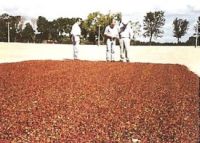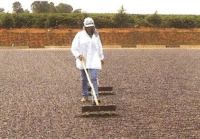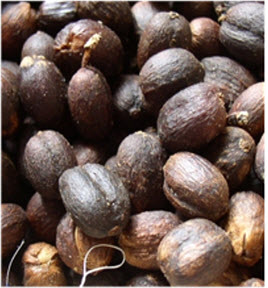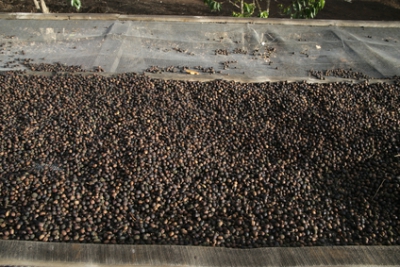During the process its important that the ripe and semi ripe beans be separated before spreading on patios since this adversely affects quality. For example, moisture contents between unripe beans can be almost double its ripe counterpart.
Once the beans have been spread on concrete patios, the layer of coffee must be rotated daily to ensure uniform drying and prevention of mold development. Once dried, the parchment is removed with machinery, polished and bagged.
 |
 |
Perhaps one of the most significant difference between a wet processed coffee and a dry is the feel of acidity and body observed. In general, dry processed coffees will always have a lower perceived acidity level, but much more body than wet processed coffees.

Why? Well, since a concentration gradient exists between the mesocarp (the pulp) and the endorcarp (bean), we see a slow migration of sugars, phenolics, etc. towards the bean.
The bean readily absorbs these additional components and causes the bean to have a corresponding greater level of soluble solids content. As such, dry processed coffee are commonly used for espresso blends.

